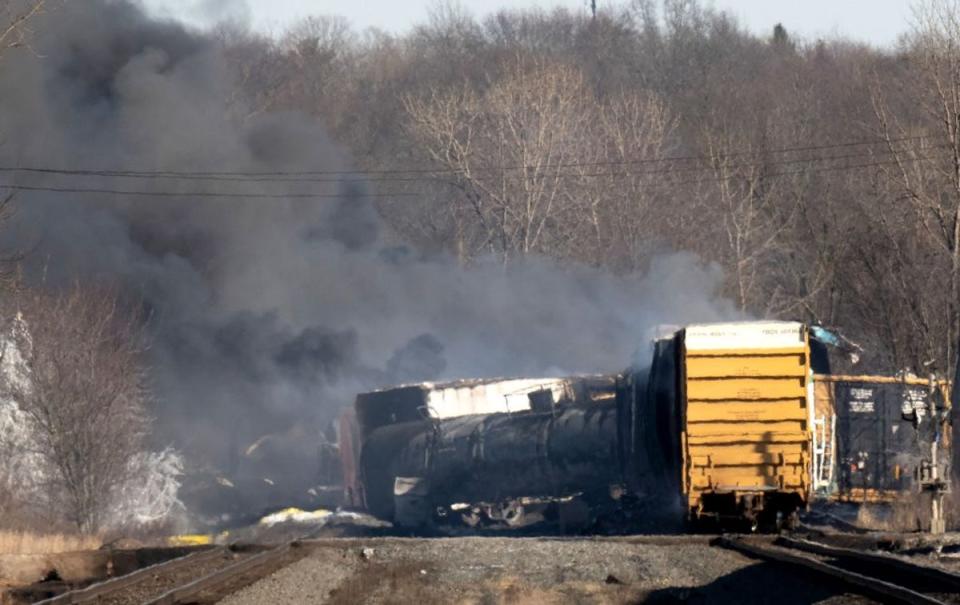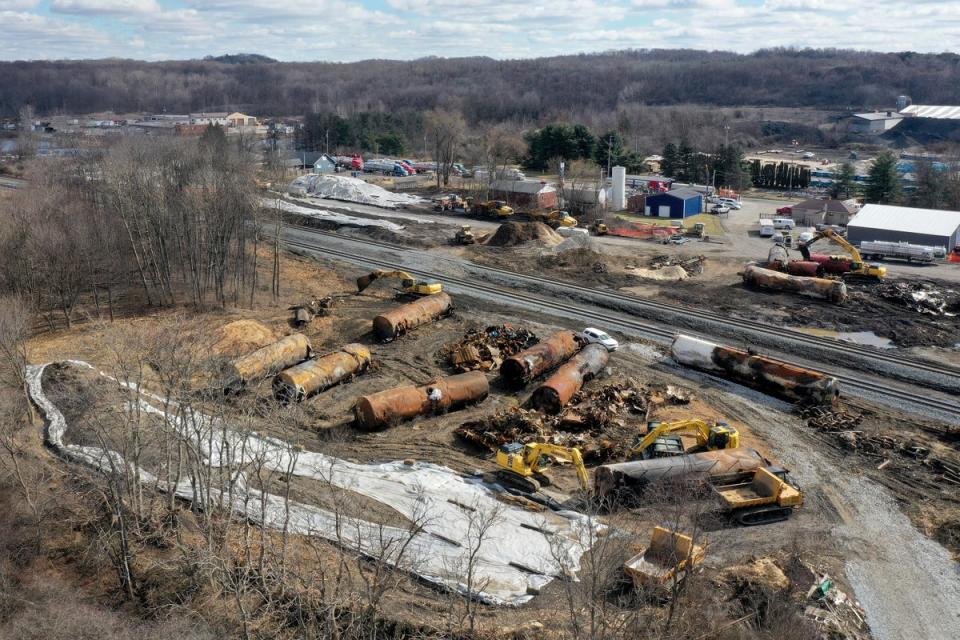Toxic chemical burn-off from Ohio train derailment was unnecessary, safety board rules
A decision to release and burn toxic chemicals from five derailed train cars in East Palestine, Ohio last year was not necessary, federal officials said on Tuesday at a final meeting on the matter.
Investigators with the National Transportation Safety Board, the agency probing the Norfolk Southern Ohio derailment since 3 February 2023, reported that responding authorities became concerned that one of the five cars would explode. Instead, they decided to allow the toxic fumes to burn off.
Officials reportedly disregarded when the cars’ temperatures started to come down which should have signaled to officials that they were becoming less of a threat, Paul L Stancil, a safety board investigator said, according to The Washington Post.
A local fire chief and other notable officials were not provided with a report from the chemical’s manufacturer which had found that the probability of a car exploding was low, the agency said. In the end, officials still made a decision to burn the chemicals.

Norfolk Southern didn’t give emergency responders information about the hazardous materials on the train until an hour after they arrived at the scene. This meant emergency responders stayed at the derailment scene longer than necessary.
“This resulted in greater exposure of emergency responders and to the public to post-derailment hazards,” NTSB investigator Troy Lloyd said.
Residents of the Ohio village, which has a population of over 4,000, have expressed concern about being exposed to vinyl chloride, the chemical released that day. Several other toxic substances spilled and caught fire after the derailment.
Experts from Oxy Vinyls, the company that made the vinyl chloride inside the tank cars, told contractors employed by Norfolk Southern that they thought no dangerous chemical reaction would occur, Jennifer Homendy, NTSB chair said at a Congressional hearing in March.
However, Oxy Vinyls was not included in the command center, the Associated Press reported.

“They informed them that polymerization, they believed polymerization was not occurring and there was no justification to do a vent and burn,” she said. “There was another option: let it cool down.”
NTSB board members are scheduled to vote on Tuesday evening on their final findings and recommendations following the investigation. Officials will also work to determine a probable cause for the incident.
A full report is expected in several weeks.
The derailment is expected to spur several changes in the rail industry. The Department of Transportation announced on Monday that railroads need to provide local emergency services with information about hazardous materials being carried through areas.
A preliminary report released by the NTSB determined that the derailment most likely occurred when a bearing on the left, front wheel of the 23rd train car failed. High temperatures twisted the part and caused it to fall off, leading the car to drop to the ground, investigators wrote.


